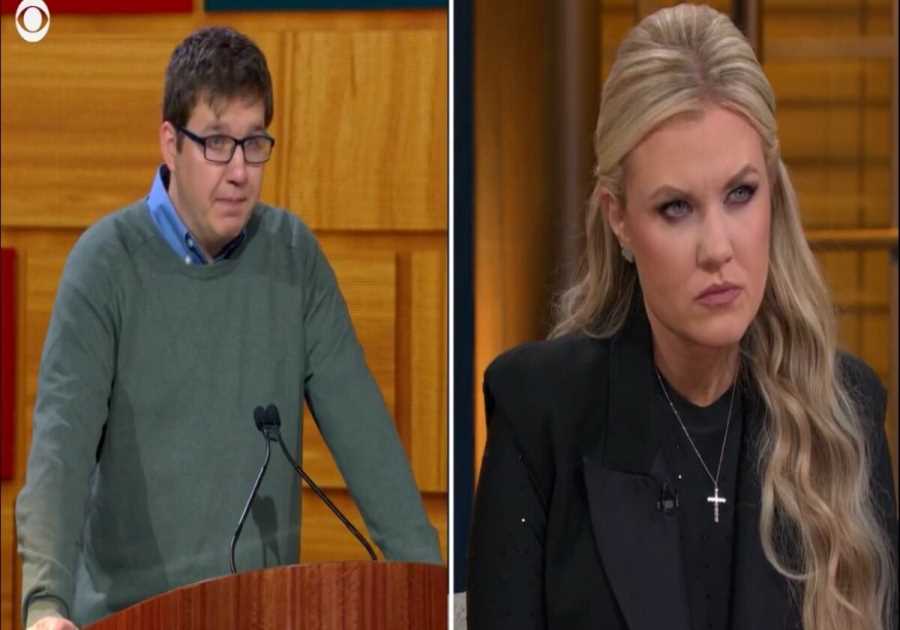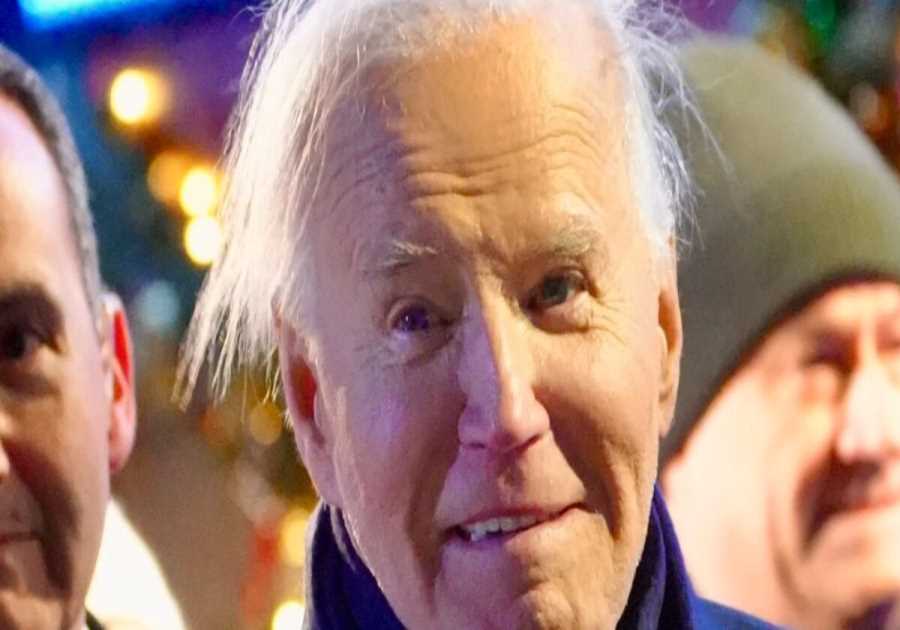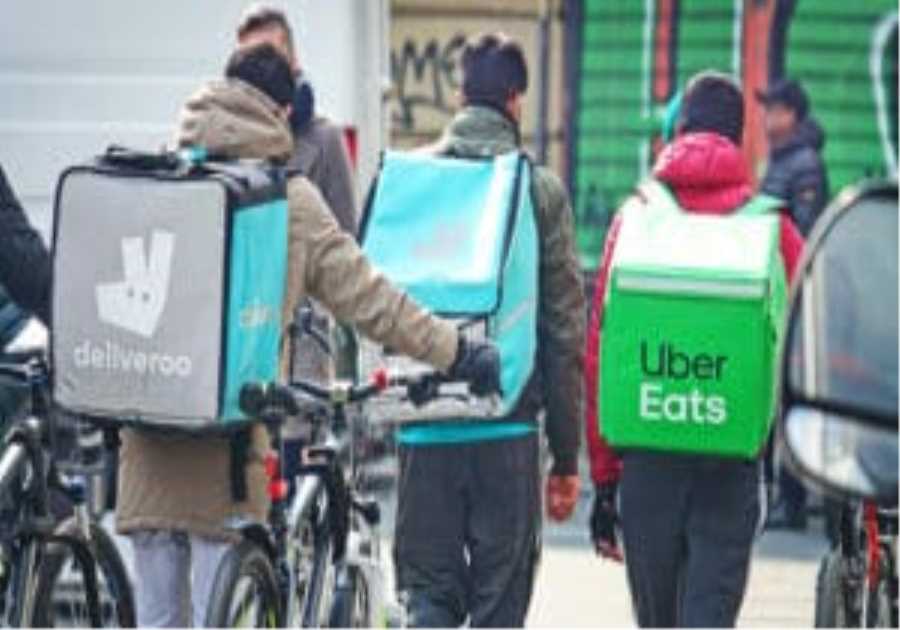Anadolu/Getty Images
- During dark, gloomy winter, many cities go through a slump as people stay indoors.
- But it doesn't have to be that way: So-called "winter cities" are built to be used year-round.
- Designing cities to be fun and accessible in the winter is good for business and people.
When Jennifer Seabolt moved from Hawaii to Boston about seven years ago, she prepared herself for winter. It wasn't the cold that got her — it was how dark and gloomy things would get.
Trying to rally friends or family to leave home when it's cold and dark outside is hard, in part because it doesn't feel like there's a lot to do, she said. And most activities involve spending money, unlike the free outdoor events that seem easier to access during warmer months.
"It is absolutely more of an effort, I think, to try to do things during the winter," she said.
Seabolt isn't alone. In many American cities, outdoor spaces shutter for a quarter of the year. In a time when a loneliness epidemic is raging — and cities are still struggling to rebound economically in the wake of the pandemic — city life shutting down for a whole season may exacerbate existing social and economic problems. That's where the concept of a "winter city" — designed to not only be livable, but actually enjoyable, during the chilly season — comes in.
Winter cities are defined by a few basic design principles, according to Isla Tanaka, the winter city planner for the Canadian city of Edmonton, Alberta: Putting public spaces in areas that receive sunshine, blocking wind, incorporating pops of color into an otherwise dreary landscape, lighting up spaces so they're still usable during long winter nights, and crafting infrastructure — like fire pits or public bathrooms — to support life in the winter.
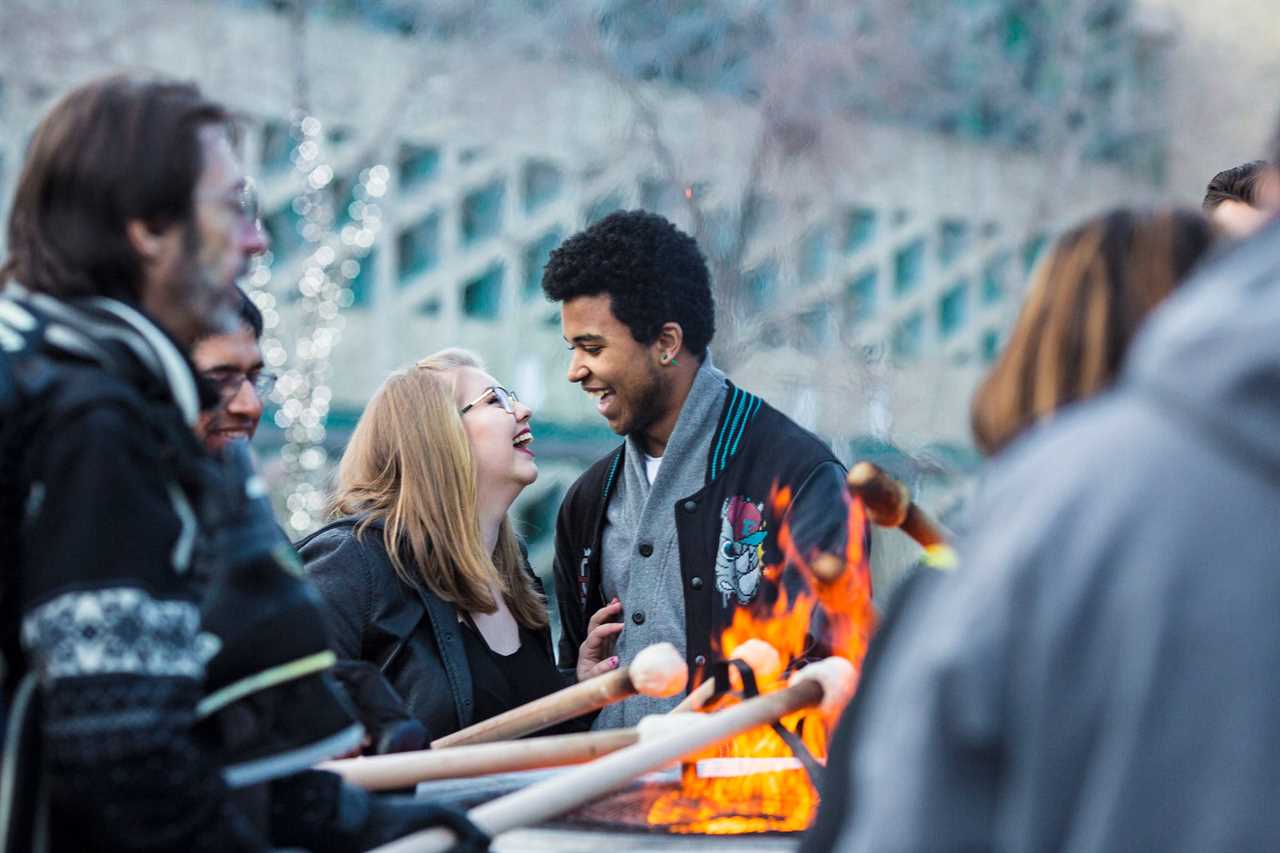
Why Edmonton
In Edmonton, which has been making itself a winter city for the last decade, initiatives include developing a four-season patio culture — the city now has over 20 venues with winter patios, up from around what Tanaka estimates was four to five patios during winter 2019-2020. The patios are heated, covered, or otherwise cozy outdoor spaces. There are festivals every weekend from November through mid-March. Parks now have bathrooms that can remain open in the winter, as well as year-round cafes. All of those initiatives sprung in part from a question of emotion, rather than infrastructure, according to Tanaka: "We said, what would make you fall in love with your city in winter?"
The biggest success in Edmonton has been a change in culture, Tanaka said. It turns out that alleyways lit up with lightboxes, artistic installations, and warm patios for sipping beverages is enough to entice people to change their habits and embrace going out in the wintertime.
"We thought that shifting the culture would be one of the hardest pieces of the work. And it actually happened much faster than we expected," she said.
The pandemic played a role — interest in outdoor activities in cities across the world spiked when indoor spaces shut down. Many cities are leaning into that enthusiasm with new programming and infrastructure to get people out of their homes.
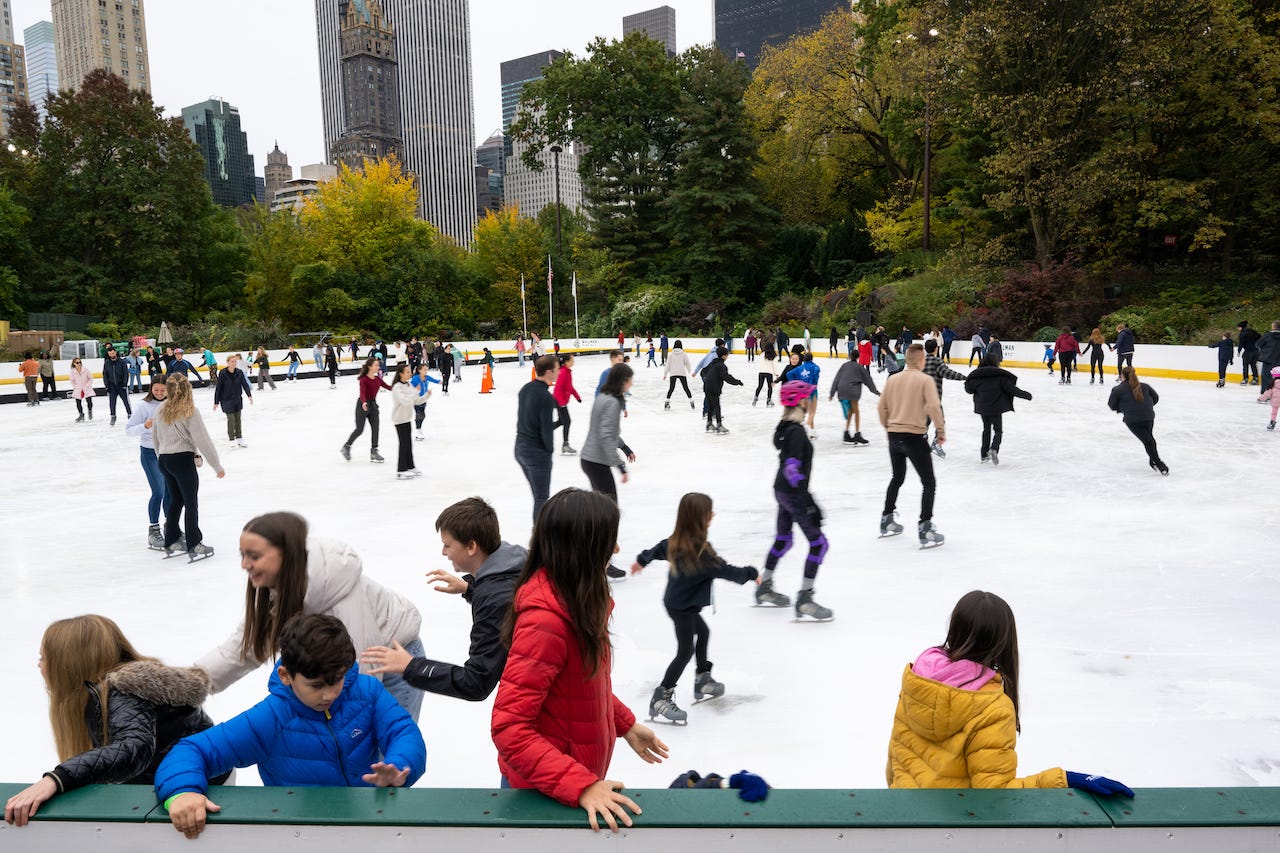
Alexi Rosenfeld/Getty Images
If you build it, they will come
On a recent Sunday night in Brooklyn, New York, light rain and low temperatures didn't stop nearly 2,000 people from weaving their way through the Brooklyn Botanic Garden's mile-long holiday light show. The immersive "Lightscape," which is stroller- and wheelchair-friendly, is bringing people outside at a time of year when the Garden would normally be "cold, dark, and closed by 4:30," said Adrian Benepe, the Botanic Garden's president and CEO.
Benepe, a former NYC Parks Commissioner, says interest in outdoor activities in the city has surged in recent years, accelerated by the pandemic. When the Botanic Garden debuted its Lightscape show in November 2020, he was blown away by attendance. The show attracted more than 150,000 visitors during its six weeks, Benepe said, during a time of year when the Garden normally gets between 5,000 and 10,000 visitors a month. It's a financial boon during the Garden's slowest time of year, and good for the institution's brand. It's also good for public health.
"In addition to just being a source of enlivening cultural institutions that would otherwise be closed and dark, it's building community, it creates antidotes to winter lethargy and to loneliness," Benepe said. "There are physical and mental health, real public health reasons to do these things, to encourage people to get outdoors in the winter."
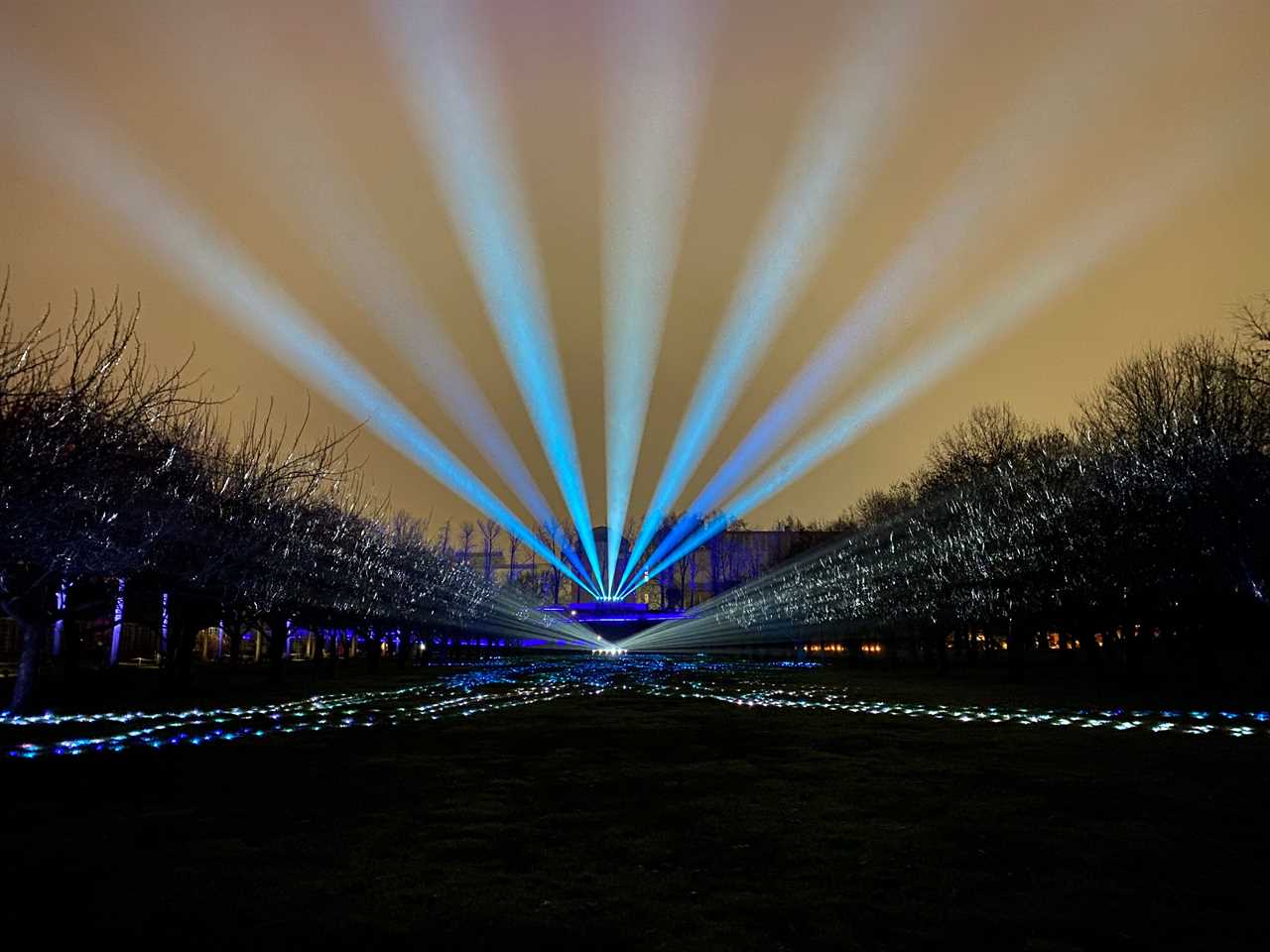
Eliza Relman/Business Insider
Winter light shows are catching on. The Botanic Garden installation is one of about 20 outdoor light attractions in the New York City metro area this season.
This isn't the first time Benepe has overseen a hugely successful effort to get people into parks during the coldest time of year. While he was parks commissioner, he helped realize Christo and Jean-Claude's "The Gates" — 7,500 massive orange metal and fabric gates through 23 miles of Central Park — in February 2005.
The Gates exhibit wasn't purposely designed to take place during the winter; it was timed to avoid bird migration seasons. But it did just what a winter city project should: It brought people outside during one of the year's coldest months, spread joy through art, and gave the city an economic boost. The 16-day-long installation attracted four million visitors. The snow made the bright orange gates look even more dramatic, Benepe said.
"Many of us in the Bloomberg administration believe it jump-started the revival of New York City as a major global tourism destination," Benepe said.
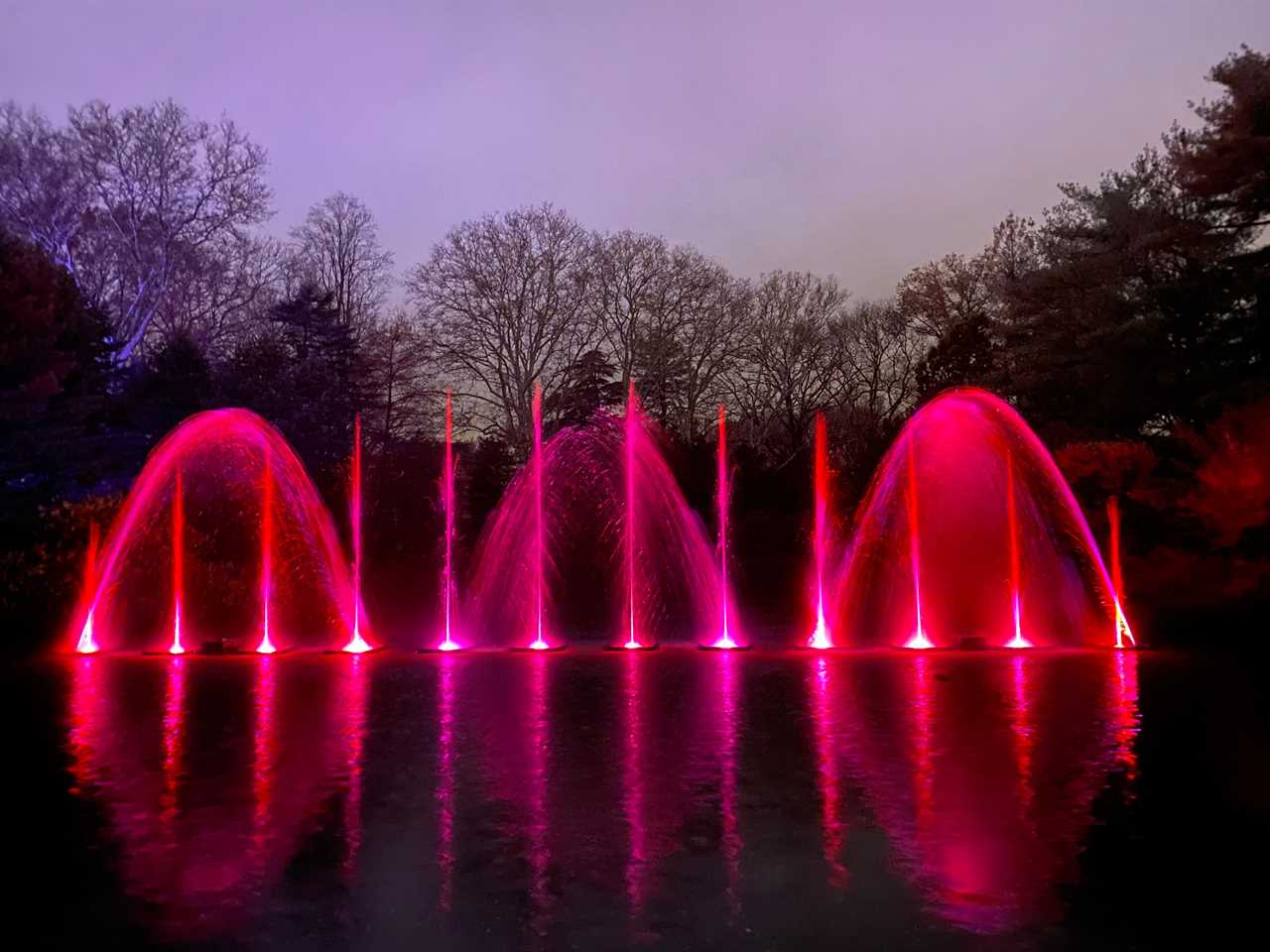
Eliza Relman/Business Insider
Becoming an accessible winter city is only getting more important
It's no secret that cities are still struggling to ease into a new normal post-pandemic. As remote work takes root, many downtowns are hurting without workers patronizing their businesses, riding mass transit, and occupying offices. The phenomenon is fueling warnings about the so-called "urban doom loop." As office vacancies rise, lower commercial property tax revenue could force leaders to curtail city services, hurting quality of life and pushing residents out.
Patrick Coleman, a Michigan-based urban and town planner professional who runs the Winter Cities Institute, said that winter cities are almost an issue of "survival" for chillier urban areas.
"For many years, the north has been losing population because people have been told that cold is bad, warm is good," Coleman said. In his region, a lot of seniors leave when they retire, moving to places like Florida or Arizona.
"That's a real problem. I mean, even if they come back in the summertime, still, their dollars are being spent somewhere else."
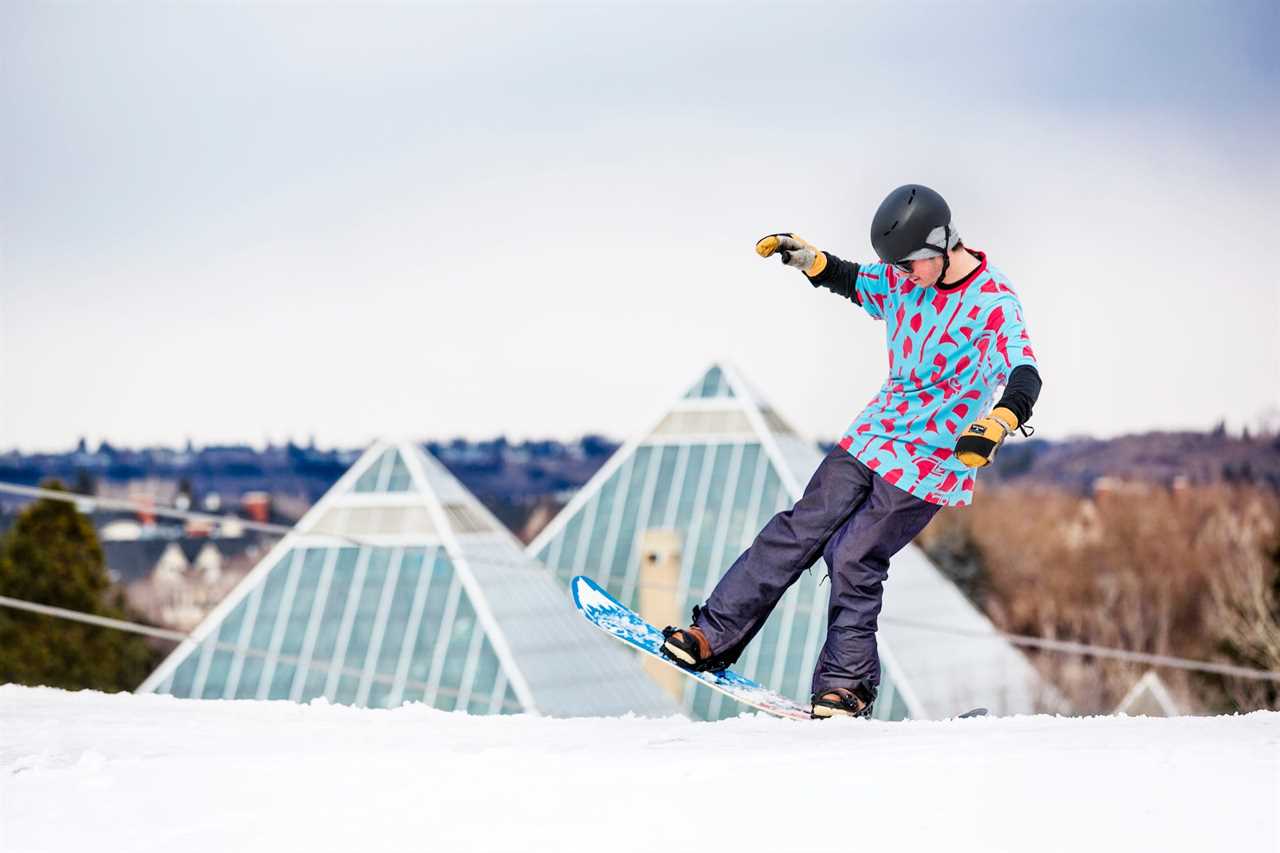
Why Edmonton
Cities across the world are racing to deal with hotter summers and extreme heatwaves that are growing deadlier. But even as climate change makes winter shorter and warmer, it's also predicted to cause more intense and frequent winter weather, including storms. That only accentuates the importance of adapting to inclement weather.
All of this also comes on the heels of the pandemic, which ushered in a heightened awareness of how we use outdoor spaces year-round, with things like dining huts and park hangouts suddenly becoming omnipresent.
"As a result of the pandemic, we see a lot of northern cities saying, hey, we should make more ski trails in the city. We should have sledding hills. It's really renewed this interest in the livable winter city," Coleman said.
Winter, of course, comes with its own challenges. Ice and snow removal is very important, Coleman said — you might clear off the streets, but someone, especially someone with mobility issues, might still have to step from the sidewalk to the curb, which could have its own puddle of snow and ice. And transit shelters are also often inadequate. While snow removal is always a thorny issue, Tanaka said that active pathways and bike lanes in Edmonton now get priority snow clearing service.
But for Seabolt, who's braved long lines and cold conditions to try and take part in Boston's few winter city offerings, things like transit that would easily get her to other neighborhoods, or even just more lights up around the city, could make a big difference.
"A fire pit in the common would be amazing to just be able to sit around and you bring friends and maybe you bring marshmallows and can do something like that without feeling like you're confined to your home or your apartment, honestly, if you're in a city," she said.
Read More
By: [email protected] (Juliana Kaplan,Eliza Relman)
Title: Seasonal depression is right around the corner. 'Winter cities' know how to fight it.
Sourced From: www.businessinsider.com/economy-new-york-city-edmonton-winter-cities-fight-loneliness-2023-12
Published Date: Sun, 10 Dec 2023 11:07:01 +0000
.png)
